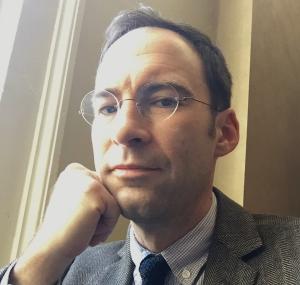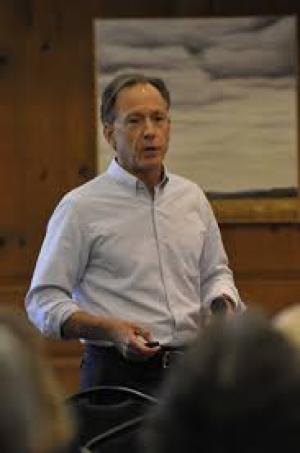Resources

Due to the diversity of Muslims in the southern Ontario region, my classes on Islam always bring together students from a variety of different sectarian, legalistic as well as interpretive, understandings of Islam. For instance, in my “Introduction to Islam” course, one can find Sunnis from various regions of the world, Shias from Ithna al-Ashariyya and Ismaili backgrounds, and Ahmadiyya Muslim students as well – all in one classroom. With such diversity, intra-Muslim dialogue becomes one of the best pedagogical tools I can use to help all of my students (Muslim and non-Muslim alike) understand the complexities of Muslim identity and the great debates that have shaped Islamic thought. While teaching about these many facets of internal Muslim diversity can be a delicate matter and care must be taken to create an atmosphere of curiosity and mutual respect, engaging the real-life distinctions present among Muslims in the classroom can bring the subject matter to life in remarkable ways. Muslim differences are on display quite regularly in the daily news, yet much Muslim discourse tends to downplay their significance. In classes, I try to cultivate greater openness to exploring these differences in an effort to understand them better and build relationships, rather than to dwell on them from a particular partisan standpoint. I point out that for centuries sectarian differences have remained far more resistant to accommodation than differences in jurisprudence. Despite contemporary voices calling for an Islamic ecumenism that embraces Shia as well as Sunni practitioners, early differences over religious leadership have led to enduring intramural rivalries, exacerbated in the last decade by patterns of sectarian mobilization amidst protracted power struggles in present-day Iraq, Syria, and Lebanon as well as simmering tensions in Pakistan, Bahrain, and Saudi Arabia. In order to unpack this history, students learn that the past politicization of sectarian differences has left an imprint on communal attitudes, beliefs, and narratives. In the absence of a robust, well-developed framework for Islamic ecumenism, conflicts rooted in problems of theological, as well as socio-political and economic exclusion, have the potential to cascade in destructive ways, with events in one country or context impacting tensions in other regions. Since the regular class sessions are devoted to helping the students navigate these historical tensions intellectually, I also facilitate supplementary “dialogical” sessions for interested students who would like to explore classroom topics in more detail. These sessions enable some of the best conversations about differences to emerge. For instance, I always open the dialogical session with a student asking a question or sharing an experience. In one session, a student who was a leader of my university’s Muslim Student Association (MSA) started the conversation by stating, “I cannot pray behind a Shi‘ite Muslim.” This statement, of course, was met with a strong reaction from one of my Ismaili students who was himself a member of the Ismaili Student Association (ISA). For the rest of the session, we had a very important sharing of different understandings of Muslim prayer and the meaning infused in different forms of prayer. From this one session, a dialogue between the MSA and the ISA started. We then formed a weekly dialogical session in which the leaders of these two groups and some of their members came together to discuss differences and similarities in rituals, beliefs, and understandings of history. After a year of dialogical sessions, the same student who had stated that he could not pray behind a Shi‘ite Muslim shared with me that “every chance I get I try to pray with a Shi‘ite Muslim.” Another pedagogical tool that I like to use when teaching about sectarian differences in Islam is taking my students on a field trip to the Aga Khan Museum of Islamic Arts in Toronto, the first museum in North America dedicated exclusively to Islamic Arts. Instead of learning through a lecture or textbook about Islam, students learn through rare art, artifacts, material culture, and stories about the different historical circumstances within which these objects were created. They also learn about the Ismaili Muslim community and Prince Karim Aga Khan IV, who is the current spiritual leader of Ismaili Muslims. Known internationally for his various charitable works and developmental projects (the Aga Khan Development Network is a well-respected NGO in the development field) and in Canada for opening the Centre for Pluralism in Ottawa as well as the Aga Khan Museum and Ismaili Centre in Toronto, the man whom Ismailis regard as their 49th Imam provides a counterpoint to many non-Muslim preconceptions about Muslims. Although the Aga Khan Museum highlights particular Ismaili and Shia experiences, it also sheds light on the character and internal diversity of traditional Islamic civilization in a much broader sense. During the field trip, students experience a general tour of the permanent collection. This enables them to learn about many artistic, intellectual, and scientific heritages of Islam and its many cultures, from North Africa to Southeast Asia. In addition, the Aga Khan Museum offers regular exhibits of contemporary Muslim art as well as programs featuring international artists and scholars, thus affording opportunities to learn about more recent manifestations of Muslim music, poetry, and thought through mediums as diverse as workshops, lectures, live performances, and film screenings. Since the museum is located adjacent to the Ismaili Centre, students also get a tour of a distinctive space for community assembly and worship, with its unusual architecture, a library, and a jamat khana (prayer hall) for daily prayers. Muslim and non-Muslim students alike testify that this field trip offers a rich, immersive experience and encourages them to reflect on Islamic religious and cultural heritages in new and exciting ways.

On November 8, 2016, I watched Ana Navarro telling ABC News that “there is a White America and there is a Brown and Black America, Chinese America, Muslim America.” Muslims, of course, are white, brown, black, Chinese, and many other things as well, so from a historical standpoint it is surely curious, if nothing else, to see how adherents of a major world religion have been squeezed into the “non-White” umbrella of the American racial classification scheme. Navarro’s comments got me thinking about my own research on Islam in the Soviet Union and the question of how large, cosmopolitan, majority non-Muslim societies have resolved the problem of finding a “niche” for Islam. I see many parallels between the political context of Islam in America today and discussions that took place in the colonial empires in the late-19th and early-20thcenturies. America is not an empire. Yet, like the British, French, and Russian empires, the U.S. is cosmopolitan, multiethnic, multifaith, and hosts a growing and prominent Muslim minority. The British, French, and Russian empires have a legacy of incorporating and dealing with Muslims that our society should be aware of. This legacy should be especially important to anyone teaching or talking about, the history of the modern Islamic world, anywhere. On the one hand, the elites of these empires, like many members of the American elite today, were firmly convinced of the inherent fanaticism and insularity of Islam, though they disagreed vehemently on whether such fanaticism stemmed from Islamic dogma (whatever that might be), or the historical and cultural circumstances of Muslim societies. The fact that these elites were Christian, secular, or some combination of the two, obviously colored their views about Islam, but so did the reality that their geopolitical interests placed them in an adversarial relationship with large swathes of the Islamic world. On the other hand, there was a vital and compelling need to extend Muslims some sense of belonging in the polity. Across the 19th century, the British, French, and Russians all sought to institutionalize Islam through the patronage of religious scholars, foundations, and shrines, and through various attempts to codify or otherwise make sense of Islamic law. With the right kind of interference, it was hoped, Islam could be civilized into a form that would make it worthy of inclusion and protection in the imperial framework. Why does this legacy matter in today’s college classroom? It is only a small overstatement to say that the current liberal/conservative impasse about Islam is a reiteration of an old colonial debate. Take, for example, the comments of Newt Gingrich who stated that “sharia is incompatible with Western civilization. Modern Muslims who have given up sharia—glad to have them as citizens.” It is perhaps fitting that Gingrich has a Ph.D. in history—though I realize I’m giving him too much credit here—because these two sentences are a crude restatement of the old colonial accommodation with Islam: join the imperial polity, but for God’s sake, practice the kind of Islam that you can show up to the Club with! In my classes on 20th-century history, which focus heavily on Muslim countries such as Afghanistan and Iran, we do not regularly discuss American politics or current events. We do, however, talk a lot about colonialism, and I try to make my students see the past through prisms that are relevant to their own lives. As it turns out, this has been relatively easy when it comes to the relationship between Islam and the state.

Why and how has Sufism become such a contested topic in the 20th and 21st centuries, and what does “authentic” Sufism look like today? Why are historical Sufi shrines in Pakistan, Mali, and Iraq being destroyed by Muslims? Why do some Muslim governments ban Sufi literature and persecute Sufis, at a time when Sufism has become increasingly popular in the West? Is contemporary Sufism a singular phenomenon, or is it shaped by a multiplicity of interpretive frameworks? Exploring answers to these questions requires a great deal of contextual knowledge of history and religious thought as well as identity politics, and many students feel daunted by the complex terrain of contemporary Sufism. Given the temptation to settle for simple answers, students need encouragement to engage the dynamics surrounding Sufism, and to critically examine diverse Muslim as well as non-Muslim reactions to this deeply rooted and yet creatively adaptive current arising from within Islamic spirituality and mysticism. When teaching on contemporary Sufism, I have started to explore three significant themes with my students: Sufism’s relationship to Islam and the development of anti-Sufi interpretive movements Students need to understand the contestation over Islamic authenticity among pro- and anti-Sufi Muslims, which is arguably one of the most prominent conflicts currently playing out in Muslim societies. To this end, it is essential to help the student explore Sufism’s historical shifts, by becoming familiar with unfinished debates over metaphysics, epistemology, and politics. One way to do this is to organize discussions about longstanding debates within Islamic thought, to promote familiarity with decisive historical moments for the formation of Sufi tradition as it evolved through engagement with theology and jurisprudence, in pursuit of answers to key questions: What is the nature of God? How can we gain knowledge of God? What is the nature and purpose of being human? Who inherits the founder’s authority? How does one define being Muslim? While Sufis were often careful to avoid standing outside the circle of orthodoxy, their distinctive ways of answering these questions aroused debate, particularly in relation to such controversy-inducing Quranic concepts as kashf and‘ilm ladunni, both of which relate to the attainment of unmediated spiritual knowledge and insight. By affording opportunities to examine contrasting orthodox views of Sufism or even constructing role plays or debates involving Sufi and anti-Sufi views, the teacher can create opportunities for penetrating insight into opposing interpretations grounded in divergent Islamic worldviews. By coming to understand classical debates on such topics, students will begin to grasp the backstory behind the many contradictory opinions about contemporary Sufism’s relationship to Islamic tradition and communal life. Also, by unpacking the historical antecedents for current debates, students get to understand the rise of Islam’s most sustained contemporary anti-Sufi movement, Wahhabism. Relationship Between Sufism and the West When teaching about contemporary Sufism, it is also essential to explore the historical European encounter with Sufism during the colonial period, especially as European “Orientalist” scholars were attracted to Persian poetic traditions of Shamsuddin Hafez and Sadi of Shiraz, as well as to more elaborate Sufi ritualized practices such as those of the whirling dervishes. For this theme it is important for the student to understand that Sufi tradition was not engaged solely through textual means or through translation, but also through a felt affinity among some Western thinkers for Sufi ideals and worldviews, particularly as expressed through poetry. Encounters with Sufism’s poetic spirit inspired European and American intellectuals and poets in new and fascinating ways. To illustrate, the teacher can explore with the students the lives and thought of two key literary Western figures: 1) the German author Johann Wolfgang Goethe (d. 1832), and 2) the American poet and lecturer Ralph Waldo Emerson (d. 1882). These two individuals’ engagements with Sufi poetry and personalities are exemplary illustrations of how the Sufi tradition was encountered and understood through translation, also in ways that played a formative role in European spiritual and literary movements. Through examining such impacts of Sufism on early modern European intellectual culture, the student can gain insight into contemporary understandings of Sufism in the West, and especially its presence in contemporary popular culture as reflected in the phenomenon of “Rumimania.” Gender Dynamics of Authority in Sufi Communities When teaching about contemporary Sufism, it also is very useful to explore the growing prominence of women in authoritative roles. In doing so it is important to help the student understand the “hidden” history of Sufism, in which Sufi female personalities were influential not only in current times but also in the development of the various aspects of the Sufi tradition, from developing its principles and practices to transmitting knowledge, and receiving recognition as saints, spiritual teachers, and authorities. Although the present era has offered additional opportunities for women to take on roles that were once reserved primarily for men, the contemporary period also shows great continuity with a history that includes women saints, teachers, and practitioners of Sufism. In North America, women carry forward this tradition by continuing to play important roles in Sufism’s development and in some cases even extending their roles beyond traditional boundaries. In a day and age of Islamophobia and clichéd thinking about Islam (sometimes promulgated by Muslim as well as by non-Muslim thinkers) teaching about contemporary Sufism can help to complexify and diversify students’ imaginations of Islam, particularly when such teaching actively seeks to make connections between past and present. By moving beyond more static debates about whether Sufism is or is not the heart of orthodox Islam (and either is or is not “authentic” in any given contemporary expression), teachers can show how Sufism has for centuries been central to debates over what is essential in Islam, and indeed over what Islam is. In the process, students can attain to a much richer and more dynamic understanding of Islamic tradition as well as of the encounter of Islamic and the Western polities and cultures.

In the quest for understanding the dynamics of Muslim societies, understanding Islam is not always the key. This was the theme of my last post on Islam and Decolonization. I would like to offer more thoughts on a related topic: racism, or at least racial and ethnic prejudice, in the Muslim societies of West and Central Asia that I focus on in modern history classes I teach. (To be clear, I most often focus on Afghanistan, Egypt, Iran, Turkey, and Soviet Central Asia.) My purpose is to demonstrate that Muslim societies are in several respects not so very different from our own. I’m sure I’m not alone in finding that some of the students, especially undergraduates, arrive in the classroom with a spoon-fed narrative about Islam that is disturbingly unitary: Islam, which is a tangible thing, has certain characteristics wherever it has spread, including shari’a (also a tangible thing), oppression of women, rejection of modernity (another thing!), and, probably, violence. This uniformity is so resolute that it sometimes even elicits admiration. Whatever differences exist across the Muslim world are not as important as these commonalities. Talking about ethnic conflict, and the very real ethnic hatreds, prejudice, and stereotyping that I have encountered in every Muslim society I’ve lived in or visited, is a valuable endeavor in its own right as a tool of historical inquiry, and also a helpful way to complicate the unitary Islam narrative. The problem is the vast majority of my students understand ethnic conflict through one prism, “racism,” which cannot be avoided in the classroom. To say the least, “racism” is a loaded term, one that, for many students at my university, carries all kinds of historical baggage with little direct relevance for the societies I deal with in class. To eschew the term entirely, however, would represent a missed pedagogical opportunity. It is true that ethnic conflict in many Muslim countries lacks the characteristics of racism in North Carolina. However, many of my students have no other frame of reference for understanding a different society (aside from the framework of unitary Islam). My goal is to help students relate to the countries whose history we are studying in terms that are understandable and familiar. An example: one topic that comes up frequently in my classes is the relationship between Turks and Kurds in post-Ottoman Turkey. After students have done the assigned readings, my starting point is to ask: what is a Turk, what is a Kurd, and why is there tension today between these groups? In a dynamic session, several themes begin to emerge in discussion: language, region, culture, rural/urban origin, religion, and class. After exploring these themes in detail, it is possible to talk about the role of ethnic nationalism, the Turkish state’s language and education policies, and the social impact of rural-urban migration. The fact that region and class attract the lion’s share of attention in our discussions is meaningful. These are two themes that all of my students understand. My approach resembles that of my hero Miss Marple, who tackled every new case by framing it in terms of the characters living in her home village. It can be risky to ask students to learn about different societies through the frames they are most familiar with. But I almost always find that, if nothing else, students come out of my classes disabused of the fantasy of unitary Islam. In an insightful recent post, Sufia Uddin wrote about the implications of the “racing” of Islam in media and politics. I am interested in the possibilities and pitfalls of talking about race, and racism, among Muslims in the Islamic world. Where does our understanding of racism apply, and where does it not? How can American frames of reference be harnessed for students’ benefit, without reducing the complexity of other societies in their eyes? I welcome your suggestions and ideas.

Caleb Elfenbein Assistant Professor Grinnell College The core learning goal of my introduction to Islam is that “Islam” is not a thing. Islam does not say anything. Islam does not do anything. Islam holds no power over anyone. Given the incredible diversity across time and space that marks the practices

Jeffrey T. Kenney Walter E. Bundy Professor of Religious Studies DePauw University Many Islamicists, specialists in Islam, talk about the challenge of teaching Islam in a post-9/11 world, a world where the War on Terror (WOT), political chaos in the Middle East (exacerbated by the WOT), and global jihadi violence.

Eren Tasar Assistant Professor University of North Carolina at Chapel Hill I remember how dumbfounded I was the first time a student told me he had grown up believing Catholics were not Christian. He had never, moreover, heard of the Orthodox Church, the only form of Christianity recognized by most

Richard Newton Assistant Professor of Religious Studies Elizabethtown College When I signed up to teach the Bible and Race in the USA, I didn’t know that my students would be able to live stream the lynching of Eric Garner and Tamir Rice. No one told me that modern courtrooms would accept a testimony from one who could liken Michael Brown to a demon. And did I mention that my undergraduate seminar was divided evenly along the color line—three white students with two black students and myself? Colleagues at my new school were excited and nervous for me. No one knew...